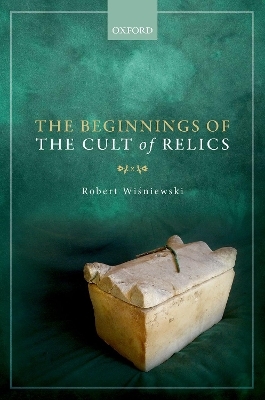
The Beginnings of the Cult of Relics
Seiten
2018
Oxford University Press (Verlag)
978-0-19-967556-2 (ISBN)
Oxford University Press (Verlag)
978-0-19-967556-2 (ISBN)
This innovative study shows how Christian attitudes to martyrs swiftly and dramatically changed in the mid-fourth century. It examines when and why Christians began to believe in the healing, protective, and divinatory power of the bones of the martyrs, and to look for physical contact with them.
Christians have often admired and venerated the martyrs who died for their faith, but for a long time thought that the bodies of martyrs should remain undisturbed in their graves. Initially, the Christian attitude towards the bones of the dead, saint or not, was that of respectful distance. The Beginnings of the Cult of Relics examines how this attitude changed in the mid-fourth century. Robert Wiśniewski investigates how Christians began to believe in the power of relics, first over demons, then over physical diseases and enemies. He considers how the faithful sought to reveal hidden knowledge at the tombs of saints and why they buried the dead close to them. An essential element of this new belief was a strong conviction that the power of relics was transferred in a physical way and so the following chapters study relics as material objects. Wiśniewski analyses how contact with relics operated and how close it was. Did people touch, kiss, or look at the very bones, or just at tombs and reliquaries which contained them? When did the custom of dividing relics begin? Finally, the book deals with discussions and polemics concerning relics, and attempts to find out the strength of the opposition which this new phenomenon had to face, both within and outside Christianity, on its way to become an essential element of medieval religiosity.
Christians have often admired and venerated the martyrs who died for their faith, but for a long time thought that the bodies of martyrs should remain undisturbed in their graves. Initially, the Christian attitude towards the bones of the dead, saint or not, was that of respectful distance. The Beginnings of the Cult of Relics examines how this attitude changed in the mid-fourth century. Robert Wiśniewski investigates how Christians began to believe in the power of relics, first over demons, then over physical diseases and enemies. He considers how the faithful sought to reveal hidden knowledge at the tombs of saints and why they buried the dead close to them. An essential element of this new belief was a strong conviction that the power of relics was transferred in a physical way and so the following chapters study relics as material objects. Wiśniewski analyses how contact with relics operated and how close it was. Did people touch, kiss, or look at the very bones, or just at tombs and reliquaries which contained them? When did the custom of dividing relics begin? Finally, the book deals with discussions and polemics concerning relics, and attempts to find out the strength of the opposition which this new phenomenon had to face, both within and outside Christianity, on its way to become an essential element of medieval religiosity.
Robert Wiśniewski is Associate Professor of Ancient History at the University of Warsaw. His research focuses on religious changes in Late Antiquity, with particular attention to the cult of saints, divination, clergy, and demons.
Introduction
1: Prehistory and Early Chronology of the Cult of Relics
2: The First Miracles
3: Defenders of Cities
4: Relics and Divination
5: Burials ad Sanctos
6: Finding Relics
7: Touching Relics
8: Displaying and Seeing Relics
9: Dividing Relics
10: Discussions and Theology
11: Eastern, Western, and Local Habits in the Cult of Relics
Conclusions
Bibliography
| Erscheinungsdatum | 15.02.2019 |
|---|---|
| Verlagsort | Oxford |
| Sprache | englisch |
| Maße | 163 x 241 mm |
| Gewicht | 564 g |
| Themenwelt | Geisteswissenschaften ► Geschichte ► Allgemeines / Lexika |
| Geschichte ► Allgemeine Geschichte ► Vor- und Frühgeschichte | |
| Geschichte ► Teilgebiete der Geschichte ► Religionsgeschichte | |
| Religion / Theologie ► Christentum ► Kirchengeschichte | |
| Religion / Theologie ► Christentum ► Liturgik / Homiletik | |
| ISBN-10 | 0-19-967556-2 / 0199675562 |
| ISBN-13 | 978-0-19-967556-2 / 9780199675562 |
| Zustand | Neuware |
| Informationen gemäß Produktsicherheitsverordnung (GPSR) | |
| Haben Sie eine Frage zum Produkt? |
Mehr entdecken
aus dem Bereich
aus dem Bereich
Was Pompeji über uns erzählt
Buch | Hardcover (2023)
Propyläen (Verlag)
32,00 €
auf den Spuren der frühen Zivilisationen
Buch | Hardcover (2023)
C.H.Beck (Verlag)
20,00 €


